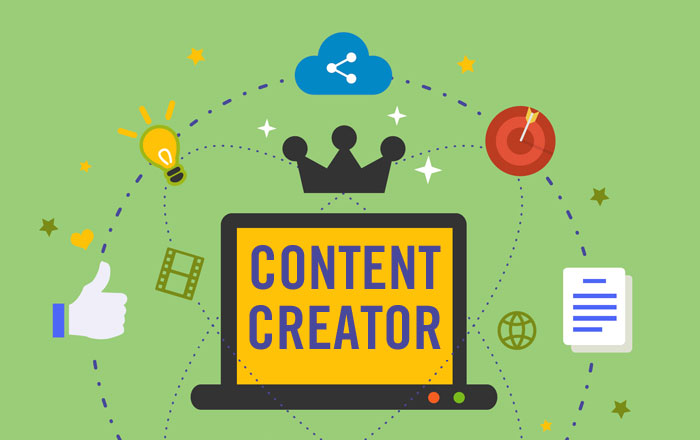Content creation is an art form.
If you want to become truly great at it, you have to allow yourself to fail. And keep writing anyway.
Picasso didn’t become a masterful painter by picking up his brush and expecting magic to happen. He studied his craft and analyzed colors, strokes, brushes, and canvases. He searched for new ways to connect with his subject matter. He refined his technique over and over again until he found that magic.
Great content creators aren’t afraid of writing a word or two out of context. They aren’t afraid of paragraphs that sound jumbled and confused. They focus more on context than on words at face value and have a deep understanding of both the subject matter and their readers.
They apply a thoughtful approach to each piece. Each status update, blog post, or detailed ebook is driven by the bigger picture. More importantly, they know that the only way to master the art of effective communication is to keep writing.
If you’re struggling with your content creation strategy, here are 7 undeniable steps that will help you captivate and engage readers, and then turn them into loyal customers:
1. Understand Your Audience
Great content creators base their work on consumer insight and have a clear picture of their target audience.
They use whatever data points they have available to immerse themselves in their audience. They interact with customer service representatives and sales teams to find out what questions they’ve answered recently and what common themes pop up.
The key here is to understand the interests and challenges of your audience. You want to dig into the problems your ideal customer is likely to be experiencing and then serve them up solutions with your content.
If you lack enough data about your target audience to comfortably assume what challenges they are facing, consider analyzing more metrics or spending time on LinkedIn groups where your ideal personas are active. Start engaging in these groups by asking questions to get the conversation going and participating in active discussions.
Then serve up your content using a tone and a voice that will resonate with your audience, and in a format that reflects the way they prefer to consume content.
2. Keep the focus on them
Great content creators understand that their content needs to be less about them and more about you. They know that they’ve got to earn the trust and loyalty of people before they can make a pitch.
They have their eye on the long-term. They know that they have to prove themselves to be reliable and trust-worthy by educating and helping their readers.
Even though you may not convert readers into customers today, people will remember that you provided them with the information they needed without giving them a hassle.
If you focus on building trust and loyalty before asking for anything in return, you will eventually gain customers that will remain with you over the long haul.
3. Plan and outline
Even the best content creators struggle with what to say. Staring at a white screen is something that even the best writers spend more time doing than they’d like, but for the most part, they have a system that keeps them on track.
Planning is your best defense against writer’s block. For every piece of content, make a detailed outline that covers each point you want to make.
This will help you deliver your message in a way that’s easy to understand. It will also help you edit your content and delete empty words that fill up the page.
Outlining your content in advance this way will eliminate the guesswork when it comes time to write. Your focus will be kept on one topic per section and you’ll avoid taking readers down a path unrelated to your objective.
It also makes for more balanced content so that each part holds equal weight and importance. You’ll be able to quickly determine if a topic warrants its own section, is part of another section or should be eliminated all together. If you only have one or two sentences worth bringing up, it may make more sense to merge it into another part or save it for another article.
4. Track your content
Creating great content requires tracking analytics regularly to find best performing content.
By identifying which blogs and premium offers drive the most traffic, you’ll be able to build off of your most popular content by creating themes of related topics.
For each piece of content you publish, track metrics such as:
- Number of unique visitors
- Traffic sources
- Engagement (likes, shares, comments, etc.)
- Average time spent on your site
The metrics listed above will help you pinpoint areas in your content that may need reevaluation. These insights will help you tweak your content creation strategy in order to achieve the results you need.
5. Repurpose
Readers consume information in different ways. Some prefer blogs, some prefer video and presentations, others prefer to download a guide, and others prefer visual content.
Great content creators don’t reinvent the wheel with every blog post or ebook. They know that successful marketing plans require loads of content and look for ways to maximize everything they write.
While tracking your analytics, jot down 3 or 4 top performing blog posts that share a common theme. Take those articles and combine them into a detailed kit, template or ebook. Similarly, why not break down each chapter of a comprehensive ebook into individual blog posts, each one with a link to your ebook for more detail information?
Try putting a fresh spin on an article that didn’t do very well the first time you posted it. Sometimes changing the title and first few paragraphs is all you need to pull people in. Is there an interesting infograph you came across that your audience would love? Embed it into a post with an few bullet points that highlight important points.
By recycling content, you’ll product more content in less time and open up the door for increased visibility and market reach.
6. Update
Great customer experiences are created by content that is relevant to your audience.
One of the best ways to engage readers is to update any outdated information on your website, blog posts, premium content, videos, and so on. It’s critically important that your content is fresh and current.
Make it a priority to review outdated information. While you may feature specific industry news in your content, for the most part try to create content that isn’t time- or event-specific. This way you’ll have less updating and correcting to do.
The last thing you want is to have readers stumbling upon content that is stale or all together expired. Update regularly to keep pace with changing trends, processes and developments as they relate to your content.
7. Write Regularly
Creating content is a marathon, not a sprint. You have to hang in there in order to reach the finish line.
Try to find a schedule where you post often enough to maintain but not so frequently that you overwhelm readers. And remember, the more you post new content, the more potential you create to drive traffic to your website.
Delivering content on a consistent basis will set expectations with your readers and help build a loyal audience.
Create a schedule for your content and commit to it. If you feel that your posting frequency is jeopardizing the quality of your writing, adjust accordingly. Readers are looking to you as a valuable resource and your content plan will quickly backfire if you sacrifice quality for quantity.
The only way to win the content creation race is to write. Then write again. And again.
Key Takeaway
If you find yourself struggling to keep up with the demands of creating content, break down the larger picture into actionable steps and tactics. First you need to define buyer personas. Much in the same way that a great artist knows his subject matter inside and out, so too great content creators must understand the challenges, goals and desires of their readers. With that customer insight, you’ll have all the ammunition you need to create engaging content that aligns with what they need. Then track, write, repurpose, rinse and repeat, as you convert loyal readers into lifelong customers.

